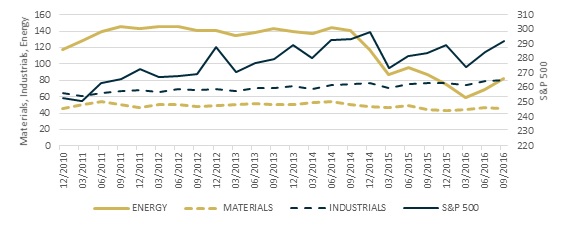We extend LINKS Mira to the analysis at a portfolio and asset class levels. Mira enables us to value asset classes and carry out scenario analyses, such as the “Trump-effect”, presented in this issue. To establish credibility of the approach LINKS have consistently taken over the years, we also review the results of our documented recommendations over the 2012 – 2016 period as published in earlier issues of Risk Wire.
The common weakness of conventional stress testing and scenario analysis is their reliance on historical statistical relationships and the assumption of “other things being unchanged”. Unfortunately, in real life there is interactivity between agents, and hence the assumption of “other things being unchanged” often renders analyses futile.
Infrastructure spending is a case in point. Increasing volumes of infrastructure spending, other things unchanged, can result in larger profits in the economy. However, higher demand for workers will put pressure on wages in similar industries (e.g. mining) and result in shrinking profits elsewhere. The combined effect on the economy will depend on the relative size and structure of the economy as well as the size of the initial change.
An agent based model simulates these relationships and treats the global economy as an integrated network. Mira will pass a change in price and/or volume in one industry (the initial event) along the supply network and estimate the total impact on profits generated by all companies in all countries. To explain this in different terms: any event will impact all other economic agents along the supply chain. The cumulative impact of all these (inter-)related changes for all agents is what LINKS Mira measures.








